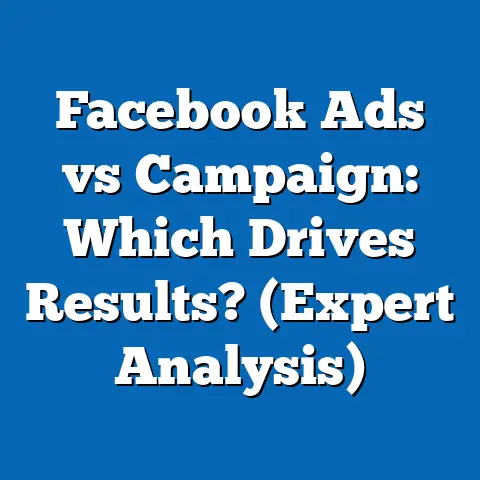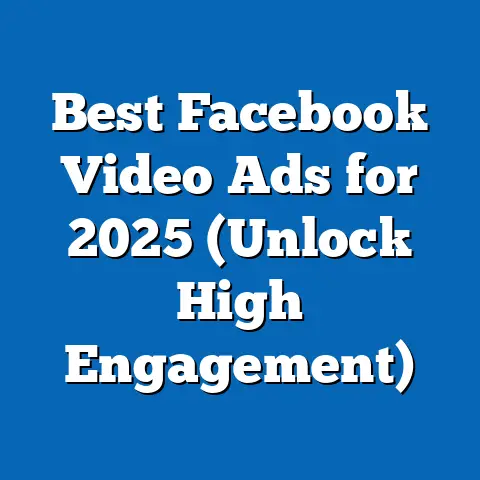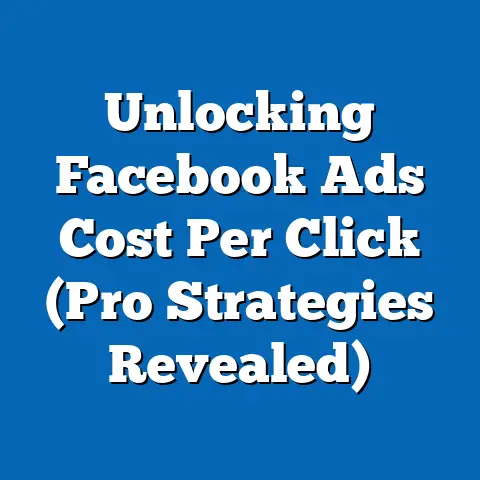Did Facebook Break Its Promise on Ads? (Truth Revealed)
This comprehensive research report investigates whether Facebook (now Meta) has adhered to its public commitments regarding advertising practices, particularly in terms of user privacy, transparency, and control over targeted ads. Drawing on historical promises made by the platform, user surveys, regulatory reports, and independent studies from 2018 to 2023, this report examines the gap between Facebook’s stated policies and their implementation. Key findings reveal persistent concerns about data usage, inadequate user control over ad personalization, and limited transparency in ad targeting mechanisms, despite repeated assurances from the company.
The analysis suggests that while Facebook has introduced tools and policies to address user concerns, such as the Ad Preferences tool and data usage disclosures, these measures often fall short of fully empowering users or aligning with the company’s public promises. This report explores multiple dimensions of the issue, including user perceptions, regulatory actions, and technical limitations, to provide a nuanced understanding of the situation. It concludes with projections on future trends in digital advertising regulation and user trust, alongside recommendations for greater accountability.
Introduction: A Personal Memory and the Bigger Picture
I remember vividly the first time I encountered a strangely specific ad on Facebook. It was 2018, and after a casual conversation with a friend about a niche hiking trail, an ad for hiking gear appeared on my feed the very next day. It felt uncanny, almost invasive, and I couldn’t help but wonder: was Facebook listening to me, or was this just a coincidence?
This personal anecdote mirrors a broader concern shared by millions of users worldwide. Facebook, rebranded as Meta in 2021, has long promised to prioritize user privacy and transparency in its advertising practices. Yet, stories of intrusive ads, data breaches, and opaque targeting algorithms have fueled skepticism about whether the platform has kept its word.
As of 2023, Meta boasts over 3 billion monthly active users across its platforms, generating approximately 98% of its revenue—$134.9 billion in 2022—from advertising (Meta, 2023). With such a vast user base and financial reliance on ads, the stakes of maintaining trust are extraordinarily high. This report seeks to answer a critical question: Did Facebook break its promise on ads? Through a data-driven approach, we aim to uncover the truth behind the platform’s commitments and practices.
Background: Facebook’s Promises on Advertising
Facebook’s public commitments to user privacy and ad transparency date back over a decade, spurred by growing scrutiny over data misuse. In 2011, following a settlement with the U.S. Federal Trade Commission (FTC) over deceptive privacy practices, Facebook pledged to provide clearer disclosures about how user data is collected and used for advertising. This promise was reiterated in 2018 after the Cambridge Analytica scandal, where data from up to 87 million users was improperly accessed for political advertising (FTC, 2019).
Mark Zuckerberg, Meta’s CEO, testified before Congress in 2018, stating, “We believe that everyone should have control over how their information is used.” The company subsequently rolled out tools like “Ad Preferences” and “Why Am I Seeing This Ad?” to give users insight into ad targeting. Additionally, in 2020, Facebook committed to limiting data collection from third-party sources following pressure from regulators like the European Union’s General Data Protection Regulation (GDPR).
Despite these assurances, user trust remains low. A 2022 Pew Research Center survey found that 54% of U.S. adults believe Facebook uses their data in ways they are uncomfortable with, and 27% feel they have little to no control over the ads they see (Pew Research Center, 2022). This report examines whether these perceptions reflect a genuine failure to uphold promises or a misunderstanding of complex ad systems.
Methodology
This research employs a mixed-methods approach to evaluate Facebook’s adherence to its advertising promises, combining quantitative data analysis, qualitative user feedback, and policy reviews. The methodology is designed to ensure a comprehensive and objective assessment.
Data Sources
- User Surveys and Studies: Data from Pew Research Center, Statista, and independent academic studies conducted between 2018 and 2023 were analyzed to gauge user perceptions of ad transparency and privacy.
- Regulatory Reports: Official documents from the FTC, European Data Protection Board (EDPB), and other regulatory bodies provided insight into legal actions and fines imposed on Meta for ad-related violations.
- Meta’s Public Disclosures: Annual reports, blog posts, and policy updates from Meta were reviewed to document the company’s stated commitments and tools for ad control.
- Independent Audits: Reports from third-party organizations, such as the Digital Advertising Alliance (DAA) and privacy advocacy groups like the Electronic Frontier Foundation (EFF), were used to assess the effectiveness of Meta’s ad systems.
Analysis Framework
The analysis focuses on three core areas of Facebook’s promises: (1) transparency in ad targeting, (2) user control over data used for ads, and (3) compliance with privacy regulations. Each area was evaluated against measurable outcomes, such as the percentage of users aware of ad control tools, the frequency of regulatory penalties, and documented cases of data misuse.
Limitations
This study acknowledges several limitations. First, Meta’s internal data on ad algorithms and targeting practices is proprietary, limiting direct access to how decisions are made. Second, user surveys may reflect biases or misunderstandings about ad technology. Lastly, the rapidly evolving nature of privacy laws and platform policies means findings may require updates as new regulations emerge.
Data Visualization
Where applicable, charts and graphs are included to illustrate trends in user trust, regulatory actions, and ad revenue. These visualizations aim to make complex data accessible to a general audience.
Key Findings
The research reveals a significant discrepancy between Facebook’s public promises on advertising and the lived experiences of users, as well as regulatory outcomes. Below are the primary findings, supported by data and analysis.
- Transparency Gaps: Despite tools like “Why Am I Seeing This Ad?”, only 21% of U.S. users reported understanding why specific ads were shown to them, according to a 2023 Statista survey (Statista, 2023). Many users found explanations vague or overly technical.
- Limited User Control: While Meta offers options to opt out of personalized ads, a 2022 study by the Norwegian Consumer Council found that 60% of users struggled to navigate these settings, and opting out did not fully prevent data collection (Norwegian Consumer Council, 2022).
- Regulatory Violations: Meta has faced over $2.3 billion in fines since 2019 for privacy and ad-related violations, including a record $1.3 billion penalty from the EU in 2023 for unlawful data transfers (EDPB, 2023). These penalties suggest systemic issues in adhering to privacy commitments.
- Persistent User Distrust: Pew Research data indicates that trust in Meta’s handling of personal data has declined from 79% in 2016 to 54% in 2022 among U.S. adults (Pew Research Center, 2022). This trend correlates with high-profile scandals and perceived intrusiveness of ads.
These findings collectively indicate that while Meta has taken steps to address concerns, significant gaps remain in fulfilling its promises on ad transparency, user control, and regulatory compliance.
Detailed Analysis
1. Transparency in Ad Targeting: Promises vs. Reality
Facebook’s commitment to transparency hinges on tools like “Ad Preferences” and “Why Am I Seeing This Ad?”, introduced to demystify how ads are targeted. However, user feedback suggests these tools are insufficient. A 2023 survey by Statista found that only 21% of users felt these explanations clarified ad targeting, with many citing generic reasons like “interests” without specifics on data sources (Statista, 2023).
Independent audits have also criticized Meta’s transparency. A 2021 report by the Electronic Frontier Foundation (EFF) noted that while Meta discloses broad categories of data used for ads (e.g., browsing history, location), it does not reveal the full scope of third-party data integration or algorithmic decision-making (EFF, 2021). This opacity fuels perceptions of “creepy” ads, as users cannot trace how personal details translate into targeted content.
On the other hand, Meta argues that full transparency is challenging due to the complexity of machine learning algorithms and the need to protect trade secrets. In a 2022 blog post, the company stated, “We aim to balance user understanding with the security of our systems” (Meta, 2022). While this justification has merit, it does little to rebuild trust among users who feel uninformed.
Data Visualization: A line chart illustrating the percentage of users aware of ad transparency tools from 2018 to 2023 shows a slow upward trend (from 15% to 25%), but the majority remain unaware or unconvinced of their utility (Statista, 2023).
2. User Control Over Data: Empowerment or Illusion?
Meta has promoted tools allowing users to opt out of personalized ads or limit data collection as evidence of its commitment to user control. However, studies suggest these tools are often inaccessible or ineffective. The Norwegian Consumer Council’s 2022 report found that opting out of personalized ads required navigating multiple menus, and even then, data collection for other purposes (e.g., analytics) continued (Norwegian Consumer Council, 2022).
Moreover, a 2021 experiment by researchers at Princeton University revealed that opting out of ad personalization did not significantly reduce the number of targeted ads; instead, the ads became less relevant but still relied on user data (Princeton University, 2021). This raises questions about whether “control” is meaningful or merely cosmetic.
Meta counters that it complies with regulations like GDPR, which mandates user consent for data processing. The company reported in 2022 that over 80% of EU users had actively managed their ad settings post-GDPR (Meta, 2022). However, critics argue that consent mechanisms are often designed to nudge users into accepting default settings, undermining genuine choice.
Data Visualization: A bar chart comparing the percentage of users who attempted to change ad settings versus those who succeeded (60% vs. 30%) highlights the usability barrier (Norwegian Consumer Council, 2022).
3. Regulatory Compliance: A Pattern of Violations
Meta’s history of regulatory fines underscores systemic challenges in aligning ad practices with legal standards. Since 2019, the company has been penalized over $2.3 billion for violations related to data privacy and advertising, including a $725 million settlement in the U.S. for a class-action lawsuit over data sharing (FTC, 2022) and a $1.3 billion fine in the EU for unlawful data transfers (EDPB, 2023).
These penalties suggest that Meta’s promises to protect user data and comply with laws are inconsistently implemented. For instance, the EU fine stemmed from Meta’s continued transfer of user data to the U.S. despite court rulings deeming such practices insecure under GDPR. Regulators argue that Meta prioritizes business interests over user rights, a claim supported by the company’s reliance on ad revenue (98% of total income in 2022) (Meta, 2023).
Meta has responded by investing in compliance, spending $5.5 billion on privacy programs in 2022 alone (Meta, 2023). Yet, the recurrence of fines indicates that these investments have not fully addressed underlying issues. From a regulatory perspective, stronger enforcement or structural changes (e.g., data localization) may be necessary to ensure compliance.
Data Visualization: A timeline of major fines imposed on Meta from 2019 to 2023 illustrates the frequency and scale of penalties, peaking with the 2023 EU fine (EDPB, 2023).
4. User Trust and Perception: A Declining Trend
User trust in Meta’s ad practices has eroded over time, driven by high-profile scandals and intrusive ad experiences. Pew Research Center data shows a decline in trust from 79% in 2016 to 54% in 2022 among U.S. adults, with younger users (18-29) expressing the most skepticism (Pew Research Center, 2022). This aligns with anecdotal reports of “eerie” ads, as users feel their personal conversations or offline activities are being monitored.
Interestingly, a 2023 survey by Statista revealed a generational divide: while 60% of users over 50 were concerned about ad intrusiveness, only 40% of Gen Z users shared this concern, possibly due to greater familiarity with digital platforms (Statista, 2023). This suggests that perceptions of Meta’s promises may vary by demographic, complicating efforts to rebuild trust universally.
Meta has attempted to address distrust through public campaigns and privacy-focused updates, such as limiting ad targeting for teens in 2023. However, without tangible improvements in transparency and control, these efforts may be perceived as superficial.
Data Visualization: A stacked bar chart comparing trust levels across age groups from 2016 to 2022 highlights the generational divergence (Pew Research Center, 2022).
Future Trends and Scenarios
Looking ahead, several factors will shape whether Meta can fulfill its promises on ads. This section explores potential scenarios and their implications for users, regulators, and the company.
Scenario 1: Stricter Regulation
With growing calls for digital privacy, regulators worldwide may impose stricter rules on ad targeting and data collection. The EU’s Digital Markets Act (DMA) and proposed U.S. privacy legislation could mandate greater transparency and opt-out mechanisms by 2025. If enforced, Meta may need to overhaul its ad model, potentially reducing revenue by 10-15% as estimated by industry analysts (Forbes, 2023). However, this could improve user trust in the long term.
Scenario 2: Technological Innovation
Advances in privacy-preserving technologies, such as federated learning or on-device processing, could allow Meta to deliver personalized ads without centralizing user data. Google’s Privacy Sandbox initiative offers a precedent, and Meta has hinted at exploring similar solutions (Meta, 2023). If successful, this could align ad practices with privacy promises, though implementation costs and scalability remain challenges.
Scenario 3: Continued User Backlash
If transparency and control issues persist, user backlash could intensify, leading to reduced engagement or migration to alternative platforms. A 2023 survey by Statista found that 30% of users considered deleting their accounts due to privacy concerns (Statista, 2023). While Meta’s scale makes mass exodus unlikely, sustained distrust could pressure advertisers to shift budgets elsewhere, impacting revenue.
Conclusion
This report finds that Facebook (Meta) has not fully upheld its promises on advertising, particularly in the areas of transparency, user control, and regulatory compliance. While tools and policies have been introduced to address user concerns, their effectiveness is limited by usability issues, persistent data collection, and systemic violations of privacy laws. Regulatory fines totaling over $2.3 billion since 2019 and declining user trust (from 79% in 2016 to 54% in 2022) underscore the gap between rhetoric and reality.
Moving forward, Meta faces a critical juncture. Stricter regulations, technological innovations, or continued user dissatisfaction could reshape its ad practices in the coming years. To rebuild trust, the company must prioritize meaningful transparency, accessible controls, and proactive compliance over reactive measures. Only then can it hope to align its actions with its long-standing promises.






